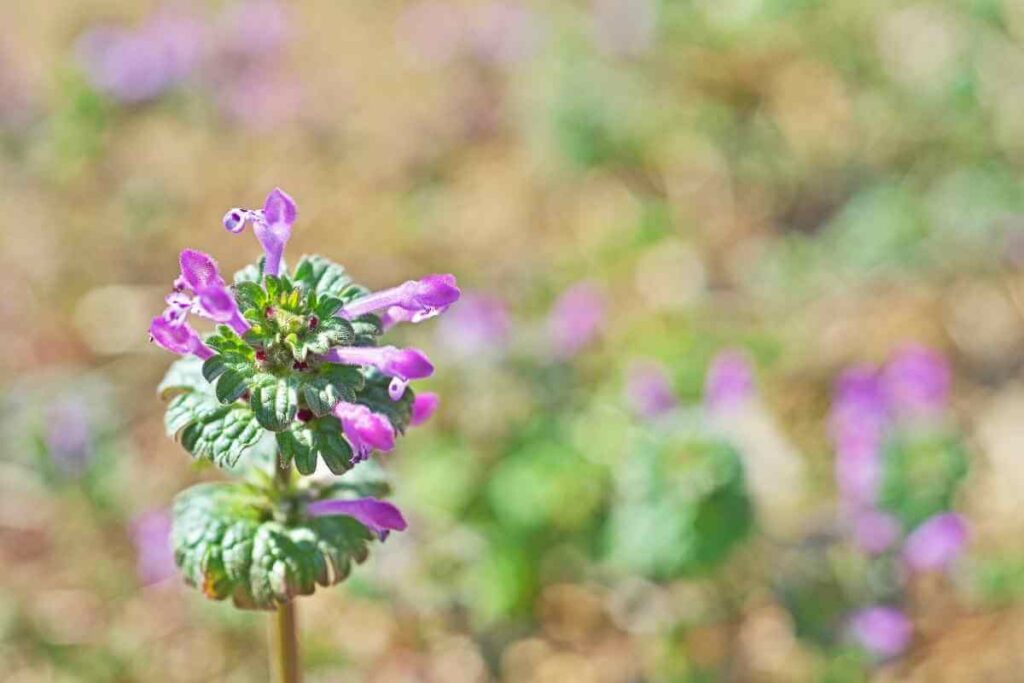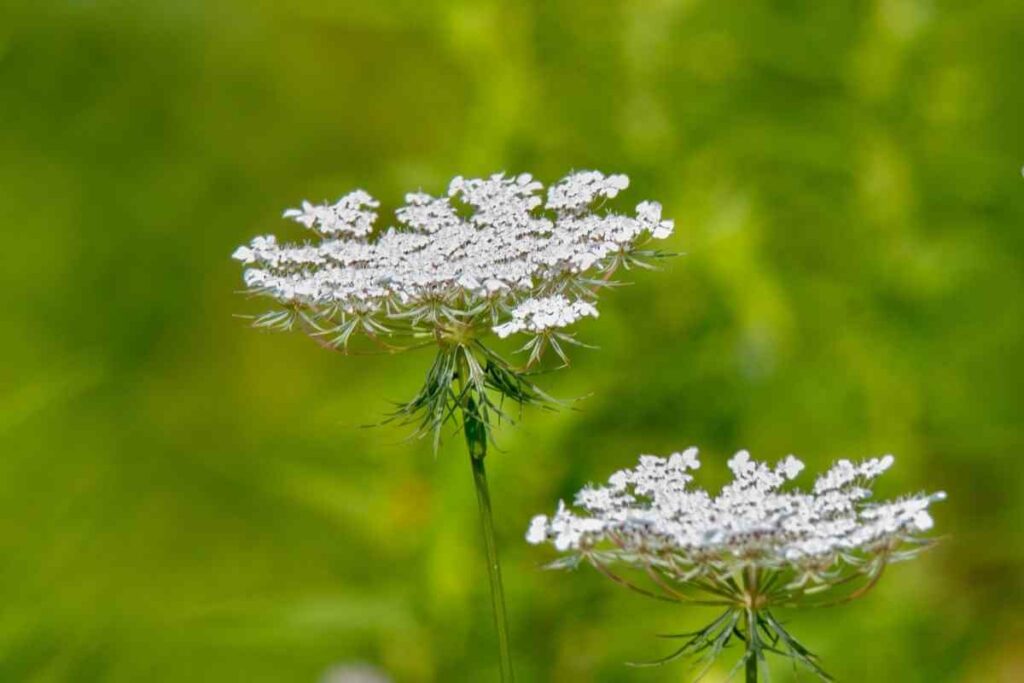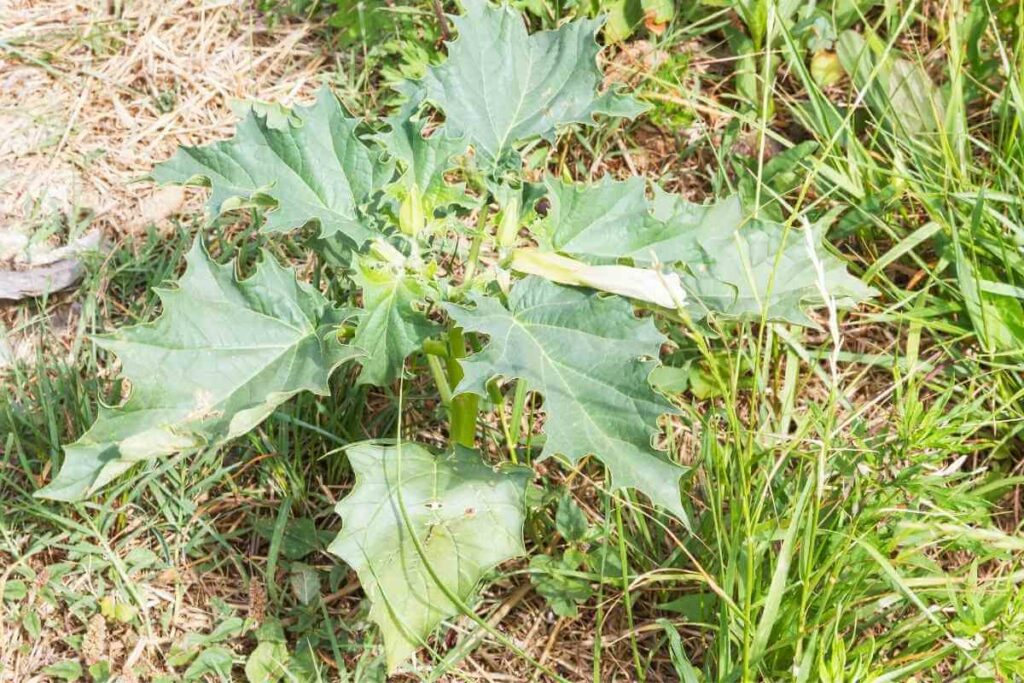As homeowners and passionate gardeners, we spend a lot of our time trying to get rid of unsightly weeds. They can grow anywhere, even in sand, although you can stop them even there, too.
But did you know that not all weeds are bad?
There are a number of flowering weeds that often fool people into thinking that they are a welcome garden plant and some of them might be growing in your garden right now!
We’ve put together a list of some of the most beautiful looking weeds that you might not be as keen to spray with the weed killer!
1. Morning Glory
Morning glory features beautiful trumpet-shaped flowers in a rich blue color.

They can often be seen growing along garden fences or around other outdoor structures and certainly do not have the classic appearance of a weed.
If you are looking to attract things like bees and butterflies to your yard then this is a weed you’ll want to allow to stay.
However, once the flowers go to seed, things can easily get out of control especially in places like your veggie patch.
2. Black Nightshades
In rich soil, black nightshades thrive excellently.
They will usually be seen in lawns and have the appearance of a bushy plant.

They’re also known for climbing and have a stunning array of purple or white flowers.
In some cases, these weeds can produce fruit in a red or purple hue.
However, don’t be tempted to eat them as these fruits as well as other parts of the weed are poisonous so we wouldn’t recommend keeping them in your garden.
3. Evening Primrose
Known for its therapeutic properties, the common evening primrose is a weed that is native to the USA.

This biennial plant is incredibly unique since its flowers are nocturnal.
With four beautiful yellow petals, the flowers open during the evening before wilting at sunrise.
While many would consider the evening primrose to be a wildflower, it does fall into the category of being a weed. But we certainly wouldn’t remove it thanks to its blissful beauty.
4. St John’s Wort
Another plant that is well known for being used in alternative therapies, St John’s Wort is a beautiful weed.
It has glorious yellow flowers and can be found growing in regions of Asia and Europe.

However, it has since naturalized across parts of America and has long been used as a treatment for wounds.
If you are looking for a filler plant in your garden, then this weed will certainly do the trick.
But you must keep in mind that things can get quickly out of hand since St John’s Wort is known for spreading incredibly quickly and is often considered to be invasive.
5. Chicory
In North America, you will often find chicory growing with its impressive height and stunning blue flowers, you could be forgiven for thinking this wasn’t a weed at all.

In some cases, certain varieties of chicory are used in salad such as endive and radicchio.
Back in the Second World War, it wasn’t uncommon for chicory roots to be used in place of coffee and in some cultures, this is still commonplace.
Again: There are a lot of people that would consider this to be a wildflower as opposed to a weed but its true identity is still up for debate!
6. Common Ragwort
The leaves of the common ragwort are a striking green or blue color and these are complemented by beautiful yellow flowers that are star shaped.

While they might look stunning, these weeds can very quickly take over an area.
For this reason, we would suggest removing them as soon as you notice them.
Moreover, the leaves contain toxins that can be irritating to humans so when removing the weeds, be sure to protect your hands by wearing gloves.
7. English Ivy
You’ll often see English Ivy trailing along the walls of a stately home or winding its way around an old Oak tree (but you can quickly kill and remove the ivy).
It certainly is one of the most beautiful looking weeds and yet it can very easily spread and take over an area.

If Ivy is climbing up a tree, it will make it to the top where it can damage the leaves as well as shading areas below the tree, making it difficult for plant life to thrive here.
Even just a few trimmings that have fallen to the ground can be problematic as they’ll start to take root and develop into fully fledged plants.
8. Violets
Many people are under the impression that violets are a true flowering plant but they come into the weed category despite their beautiful appearance.

These perennial weeds blossom with delightful purple or white flowers and tend to show up on sparse lawns.
They love shaded patches but also have a tendency to spread so once you notice them, it’s a good idea to remove, treat them or at the very least cut them back.
9. Henbits
These weeds come out in the winter and produce beautiful purple or pink flowers at the top of the greenery.

While they might be classed as a weed, it’s perfectly OK for henbits to grow in your garden as they won’t take over anywhere near as quickly as others.
That Said: When left to their own devices, they will eventually take over your lawn so it is a good idea to stay on top of them.
10. Chinese Wisteria
While absolutely beautiful and potentially one of the best-looking flowering weeds there is, Chinese wisteria has a dark side.

When they go to seed, these weeds will rapidly spread and can even begin to take over local woodlands and other areas.
You will often see Chinese wisteria for sale in your local garden center but you must be prepared to heavily prune and take care of the plant if you want it in your garden.
What’s more, planting it in a container won’t stop it; it’s going to spread!
11. Mint
Yes, you read that correctly.
That beautifully fragrant herb that so many people have growing in their gardens is, in fact, a weed!

Now, we aren’t suggesting that you dig up your herb garden just yet, but you should keep in mind that all varieties of mint are incredibly aggressive and will spread when not kept under control.
The best way to ensure that it doesn’t take over is to plant it in a container.
12. Queen Anne’s Lace
You have probably seen Queen Anne’s lace growing all over the place.
This wide spreading plant features small, white flowers that give the appearance that it is covered in white lace; hence the name.

It’s usually found growing along the roadside and in summer meadows and while it is native to Asia and Europe, it’s now commonly found throughout North America.
What’s fascinating is that this weed is very closely related to the carrot and the roots can actually be eaten when they are young.
However, since this plant looks very similar to Poison Hemlock, you should be wary when harvesting it.
13. Daisy Weeds
The common daisy is often thought of as a flower and it can be found popping up in lawns all over the world.
But did you know that this is actually a flowering weed?

These flowers have a bright yellow center that is surrounded by delicate white petals.
While they might look nice, daisies can take over your lawn and they’re notoriously difficult to remove.
That said, it is possible to buy special tools to remove them rather than simply trying to mow them as this is less than effective.
14. Field Bindweed
You might confuse field bindweed with morning glory but they are two different plants.
The flowers are a similar color but come in a bell-like shape rather than a trumpet.

You’ll see these weeds flourishing along the sides of roads and in fields but it doesn’t take much for them to invade your garden!
Some people may choose to plant them in a container but do this with caution as they will very easily spread.
When grown in the ground, the deep set roots must be dug out if you want to avoid further invasions but unnoticed roots can stay in the ground for as long as 20 years before making an appearance on the surface so you might not even know they’re there!
15. Oxalis
Upon first glance, you might think that oxalis is a clover but don’t be fooled!
The leaves do look very alike but the flowers of the oxalis are quite different.

These weeds have yellow, cup shaped flowers which are produced in the summer and then again in fall.
They are very resilient to all types of weather and will do well in both shady and sunny spots so it isn’t uncommon to find them in your garden.
However, keeping them at bay means adding a lot of mulch.
16. Goldenrod
Did you know that the United States is home to more than 60 species of goldenrod?
These weeds have a plume shape and spiky yellow flowers and can often be seen growing along the side of the road as well as in meadows and fields.

Typically coming in the late summer, many people associate the golden rod with the onset of fall.
It is for this reason that they are often used in autumnal floral displays.
However, they’re not great as a garden plant so if you find them, it’s best to get rid of them.
17. Creeping Thistle
If you have just seeded your lawn then there is a good chance that you may notice a creeping thistle.

These weeds feature light purple flowers and spiky leaves.
These leaves can be very prickly on the feet so you definitely will want to remove them from your lawn to protect those tootsies!
18. Milkweed
The milkweed gives us a clue in its name that it is no ordinary plant yet the purple or pink flowers make you think otherwise.

Butterflies absolutely love these weeds so if you’re looking to attract them to your garden, milkweed might not be such a bad thing.
19. Devil’s Snare
You might hear this weed being referred to as Jimsonweed but they’re one of the same thing and the name Devil’s snare is certainly fitting.

These weeds have absolutely stunning nocturnal flowers that can vary in color from white through to a light purple.
However, they also contain a hallucinogenic chemical which is very toxic so we would never suggest allowing the plant to remain in your garden.
Fortunately: They are usually only found in Central America so won’t be a problem for most homeowners.
20. Fleabane
Fleabane is a small flower that doesn’t look all too dissimilar to the daisy.
It features a yellow middle with lots of small white petals around the edge which blossom from spring all the way through to fall.

You’ll typically see them in woodlands, fields, and growing along the edge of the road.
They do well as wildflowers but may be a little more difficult to contain as a garden plant so grow them with caution!
Conclusion
Isn’t it surprising to see how many beautiful flowering plants are, in fact, weeds?
While some can be safely grown in your yard, others may be toxic or can easily take over, damaging other plants.
How many of these have you seen growing in your garden?
